Key takeaways:
- Animal advocacy requires understanding the past traumas of animals and fostering empathy to create a more humane society.
- Successful initiatives like community workshops and partnerships with local businesses demonstrate the power of education and collaboration in promoting stray animal welfare.
- Challenges in advocacy include lack of community support, emotional strain on advocates, and bureaucratic obstacles, highlighting the need for persistence and emotional well-being.
- Personal motivations for advocacy are often ignited by encounters with suffering animals, driving the desire to create a culture of compassion and responsibility.

Understanding animal advocacy
Animal advocacy is not just about speaking up for those who can’t voice their needs; it’s about understanding the complexities of their lives. I recall a moment when I was volunteering at a shelter and saw a stray dog that flinched at every movement. It struck me that advocating for animals means also considering their past experiences and the trauma they carry. How can we expect to help them if we don’t first grasp their stories?
When I began my journey in animal advocacy, I was often met with skepticism. People would ask, “Why does it matter?” My response came from a deep place; every animal deserves kindness and a chance at a safe life. Each one is a unique being with feelings and instincts that deserve respect and protection.
The heart of animal advocacy lies in empathy — it’s about championing the voiceless and demanding their rightful place in society. I often wonder, how can we enrich both human and animal lives through this work? By fostering compassion, we not only transform their world but also ours, creating communities that value all forms of life.
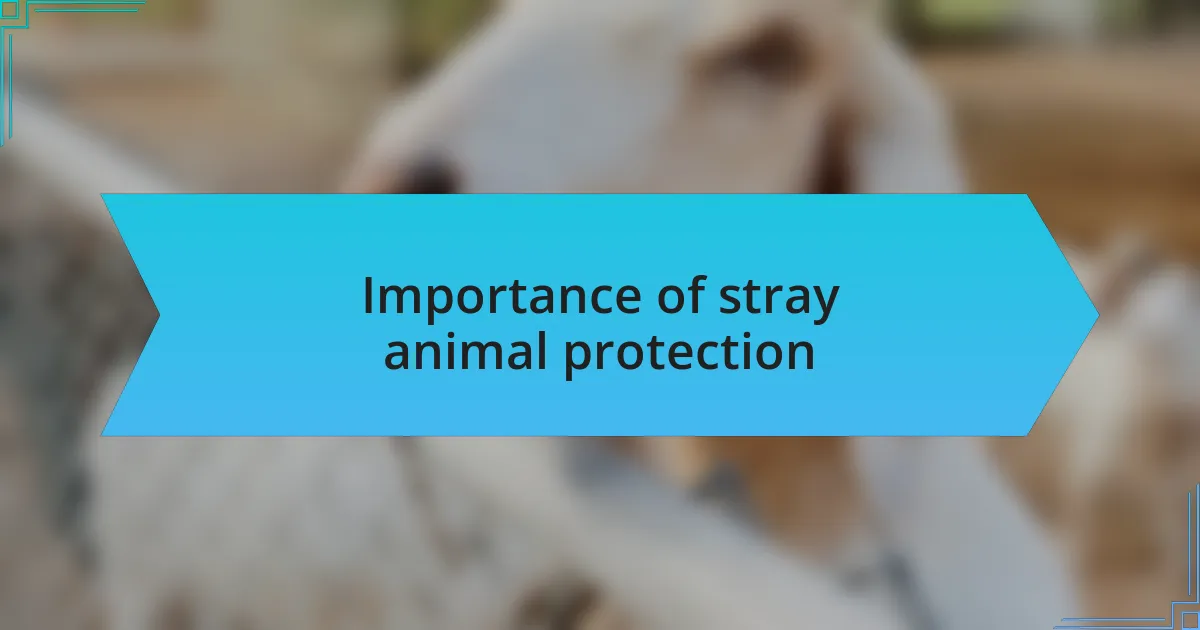
Importance of stray animal protection
Stray animal protection is crucial for the overall health of our communities. I remember the first time I saw a colony of stray cats living behind a grocery store. It broke my heart to see them scavenging for food, but it also made me realize the importance of humane approaches, like trap-neuter-return (TNR) programs, to manage their populations without causing harm. When we protect these animals, we reduce issues like disease transmission, which can impact public health.
Moreover, advocating for stray animals nurtures a sense of responsibility within our society. When people realize that neglecting these animals can have wider repercussions—such as overpopulation and environmental degradation—they often feel compelled to take action. I once spoke to a friend who adopted a stray dog; she shared how rescuing him not only changed his life but also transformed her outlook on responsibility and compassion. It’s amazing how one act can ripple out to inspire others.
Understanding the importance of stray animal protection also reflects our values as a society. I often ask myself: what kind of world do we want to create? By treating all beings with dignity, we pave the way for a more humane existence. Each act of kindness acts like a beacon, encouraging others to join the cause and reminding us that our collective actions can lead to meaningful change.
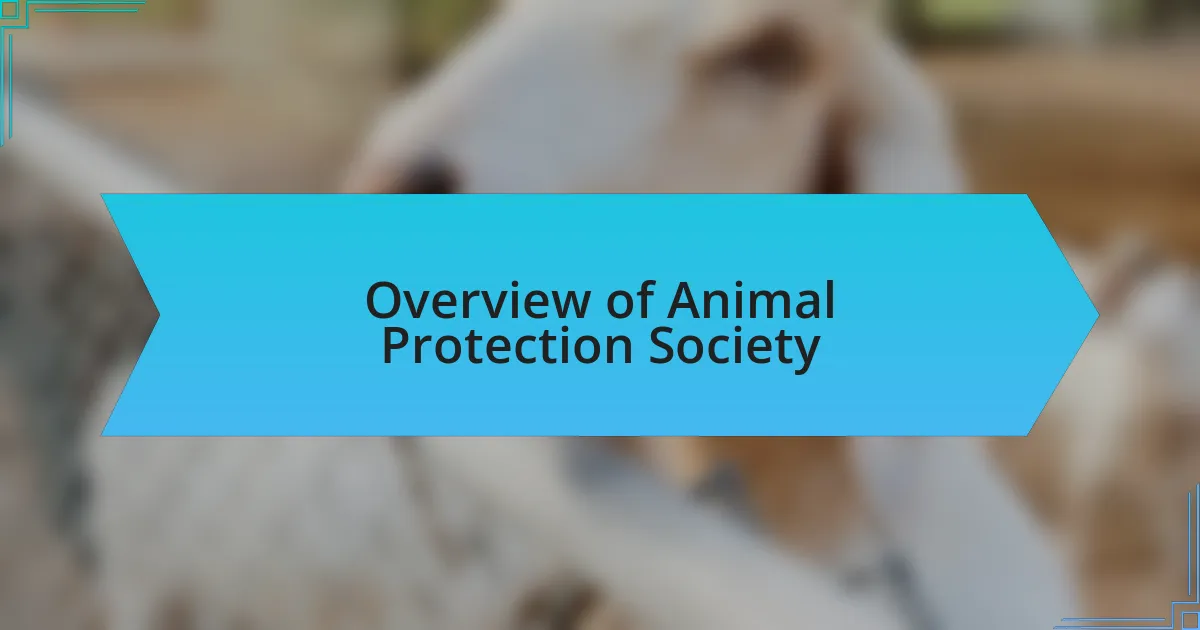
Overview of Animal Protection Society
The Animal Protection Society (APS) stands as a stronghold for animals in our communities. As I became involved in local advocacy, I was struck by how dedicated its members are, tirelessly working towards the welfare of animals that often have no voice. Their mission to rescue, rehabilitate, and find loving homes for strays speaks volumes about our shared responsibility in protecting these vulnerable lives.
What truly sets the APS apart is its commitment to education and outreach. I remember attending one of their workshops on animal care. It was enlightening to see how many people were eager to learn about responsible pet ownership and compassionate approaches to stray management. This proactive stance not only equips individuals with knowledge but also fosters a community that values the well-being of all animals.
Additionally, the APS actively collaborates with local governments and organizations to champion legislation that supports animal welfare. I recently learned about one such initiative where they successfully pushed for stricter penalties against animal cruelty. It was empowering to witness how collective action could result in real change, reinforcing my belief that everyone can contribute to a more humane society.
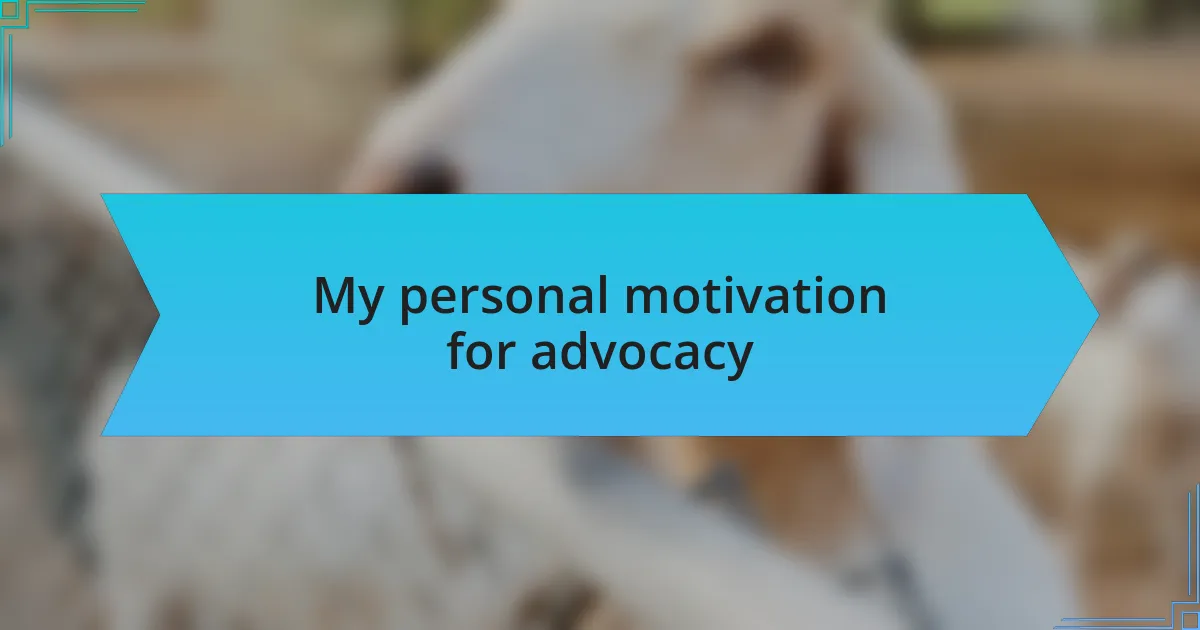
My personal motivation for advocacy
I have always felt a deep connection with animals, especially those who find themselves abandoned or lost. There was a moment when I stumbled upon a stray dog in my neighborhood, shivering and scared. I couldn’t help but ask myself: how could someone just leave this gentle creature behind? That encounter ignited a fire in me to advocate for those who can’t advocate for themselves.
The more I learned about the plight of stray animals, the harder it became for me to stay silent. Each story I heard about an animal suffering due to neglect or abuse filled me with a sense of urgency. I remember another time, volunteering at a local shelter, where I met a cat named Whiskers. His story of survival after being rescued from a hoarding situation broke my heart and opened my eyes to the countless animals that need our attention and compassion. It reinforced my commitment to this cause; if I can lend a voice to even one creature, it feels like a step in the right direction.
Advocacy isn’t just about rescuing animals; it’s about creating a culture of empathy and understanding. It often makes me wonder: what more can we do as a community to extend our compassion? My motivations are fueled by hope—hope for a future where every stray animal receives the love and care it deserves. In my journey, I’ve realized that each small act of kindness can ripple out, making a tangible difference in the lives of these animals.
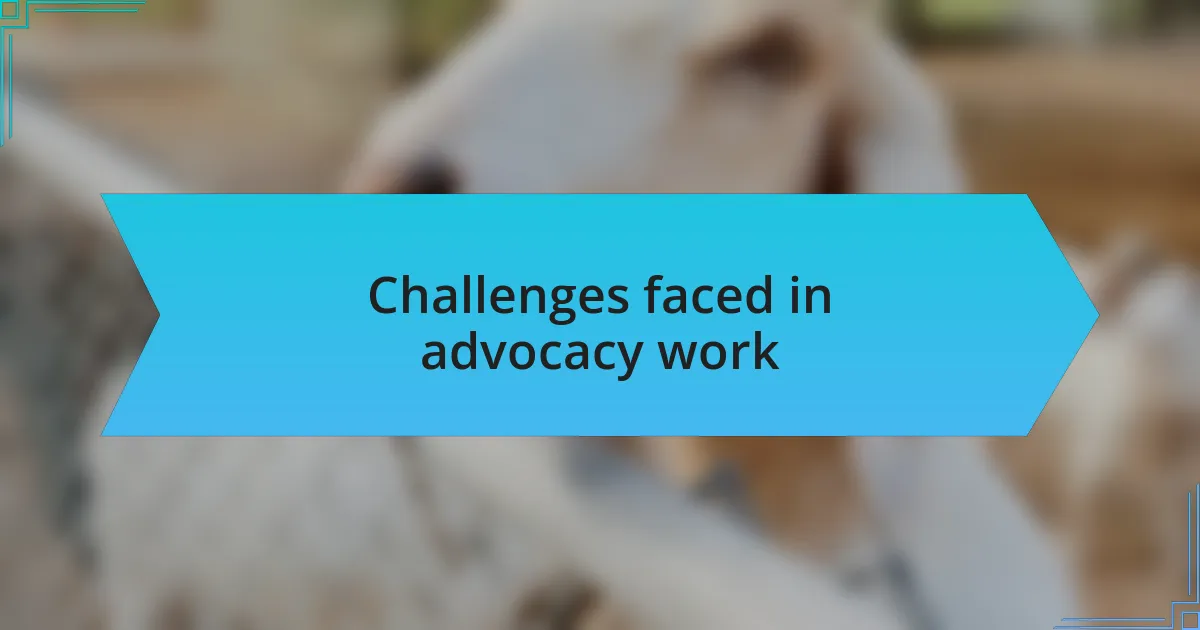
Challenges faced in advocacy work
Advocating for stray animals is not without its hurdles. One major challenge I often encounter is the lack of community support. During a fundraiser I organized, attendance was frustratingly low, despite the clear need for resources. I remember standing in front of an almost empty room, wondering how to inspire others to see the urgency of our mission. It was disheartening, but it reminded me of the importance of persistent outreach and education.
Another significant issue is the emotional toll that advocacy work can take on individuals. I recall days filled with calls about animals in distress, after which I felt utterly drained. It’s challenging to keep fighting when the stories can weigh heavily on your heart. This led me to question: how do we support each other as advocates while also caring for our own emotional well-being? I realized that sharing these experiences with fellow advocates not only helped lighten the load but also forged stronger connections within our community.
Lastly, navigating bureaucratic obstacles poses an ongoing difficulty in this advocacy journey. There have been times when I’ve encountered red tape while trying to secure permits for rescue operations or adopt-a-thons. It often feels like an uphill battle, where the frustration of delays could easily overshadow the mission. I’ve learned to embrace patience and persistence, reminding myself that each small victory contributes to the larger goal of protecting these vulnerable animals. How can we educate others about the importance of efficient policies? Each conversation can spark change, and it’s vital to keep the dialogue going.
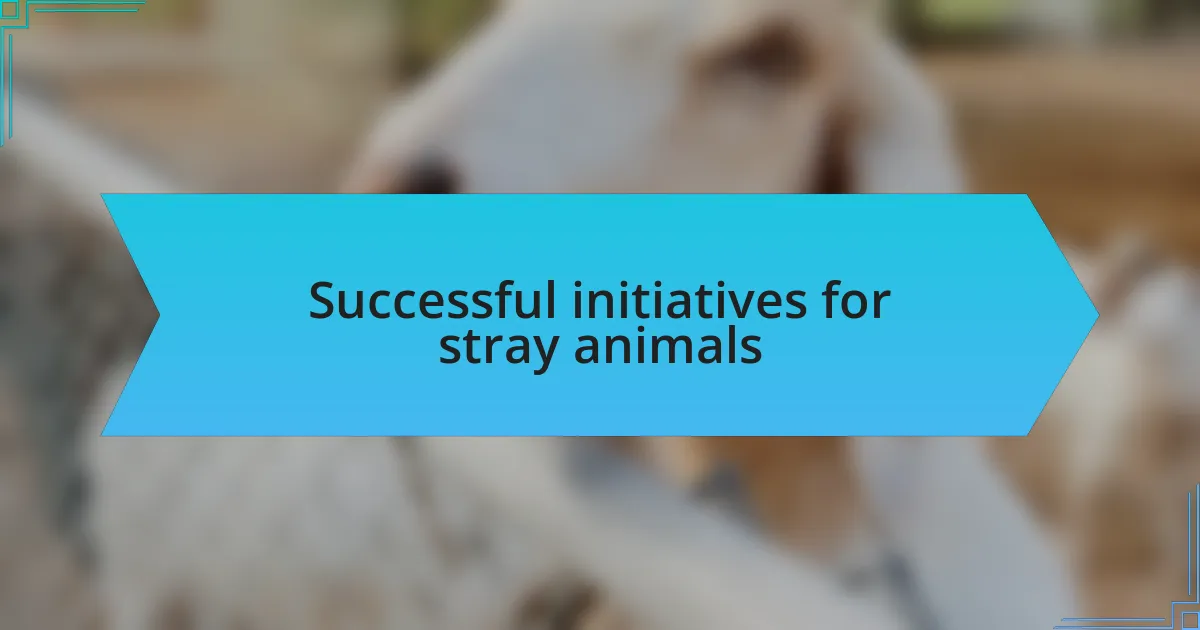
Successful initiatives for stray animals
One successful initiative that stands out is the community outreach program I initiated at a local shelter. We organized pet care workshops in neighborhoods, where I could see firsthand how residents’ eyes lit up with newfound knowledge. Teaching people how to care for strays, from basic feeding tips to recognizing signs of distress, made me realize how empowering education can be. Have you ever seen someone transform their perspective? It’s incredibly rewarding to witness.
Another initiative that garnered great results was the partnership with local businesses to create a “Stray Friendly” certification. Businesses displayed a badge and contributed a percentage of sales to support our cause. I recall the pride in a shop owner’s voice when they shared how their customers appreciated the initiative, knowing their purchases were making a difference. It’s fascinating how a little collaboration can generate so much positive energy within a community, isn’t it?
On a more personal level, I spearheaded a foster program that has since placed numerous animals in loving homes. I remember one particular dog, Max, who thrived in a foster family after being rescued from the streets. Watching him transform from a timid, scared pup to a joyful companion was an emotional journey that underscored the critical impact of providing immediate care. It makes me wonder: how many lives could we change if we continue to expand such initiatives? Each success story fuels my passion to do more.